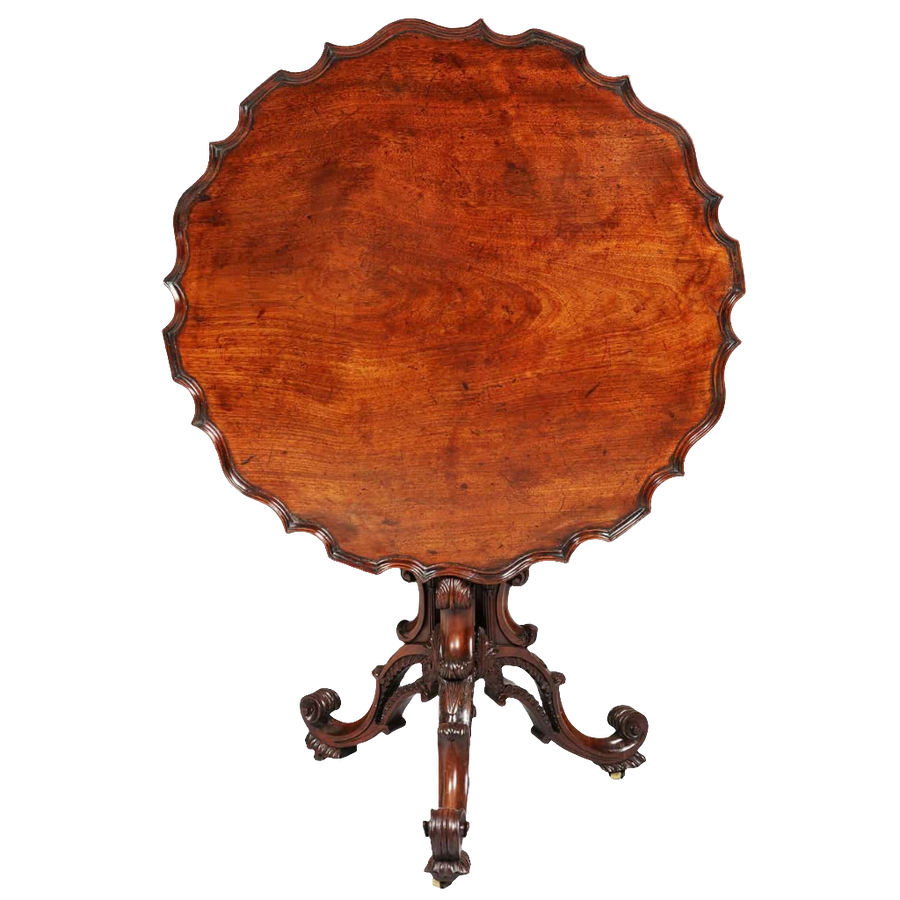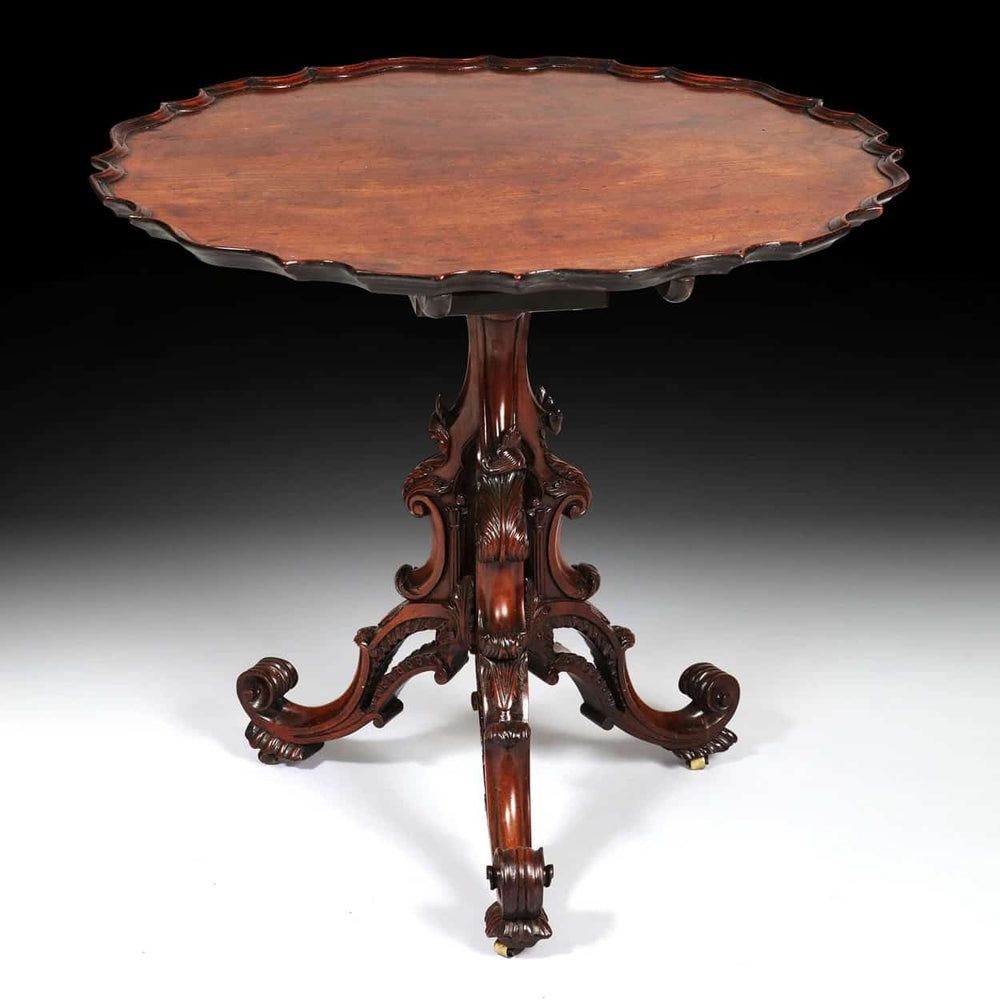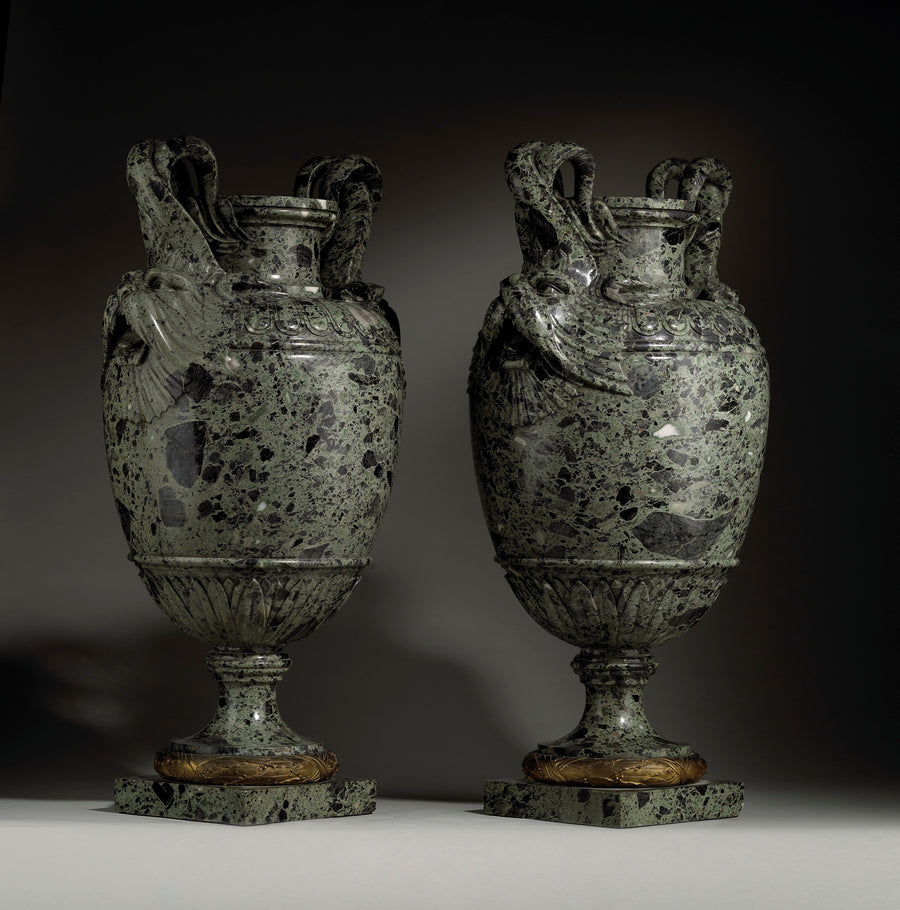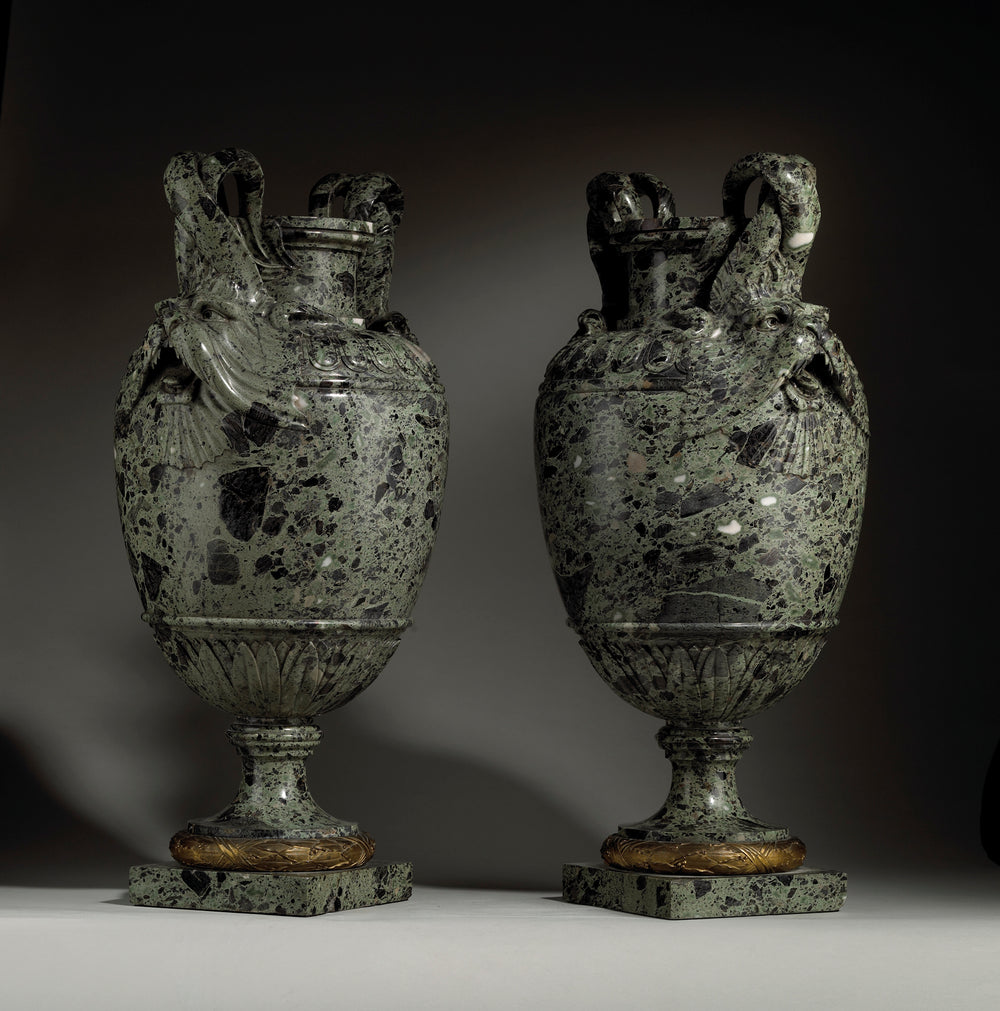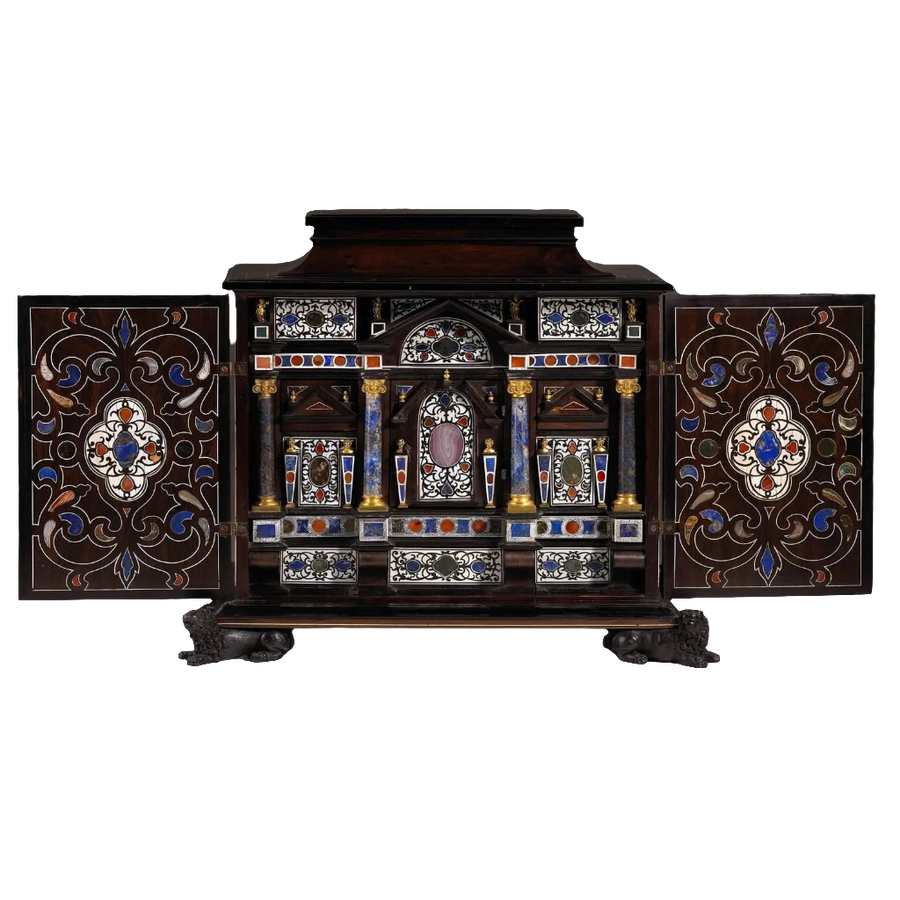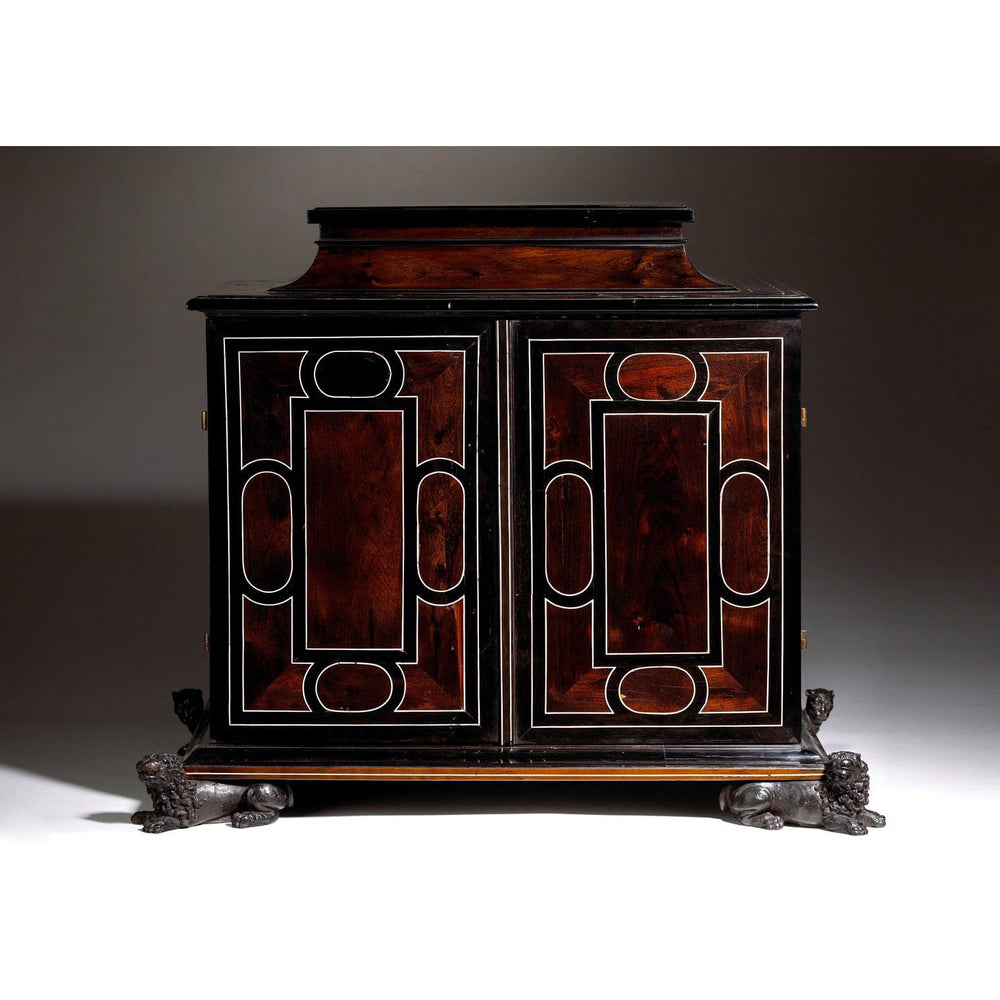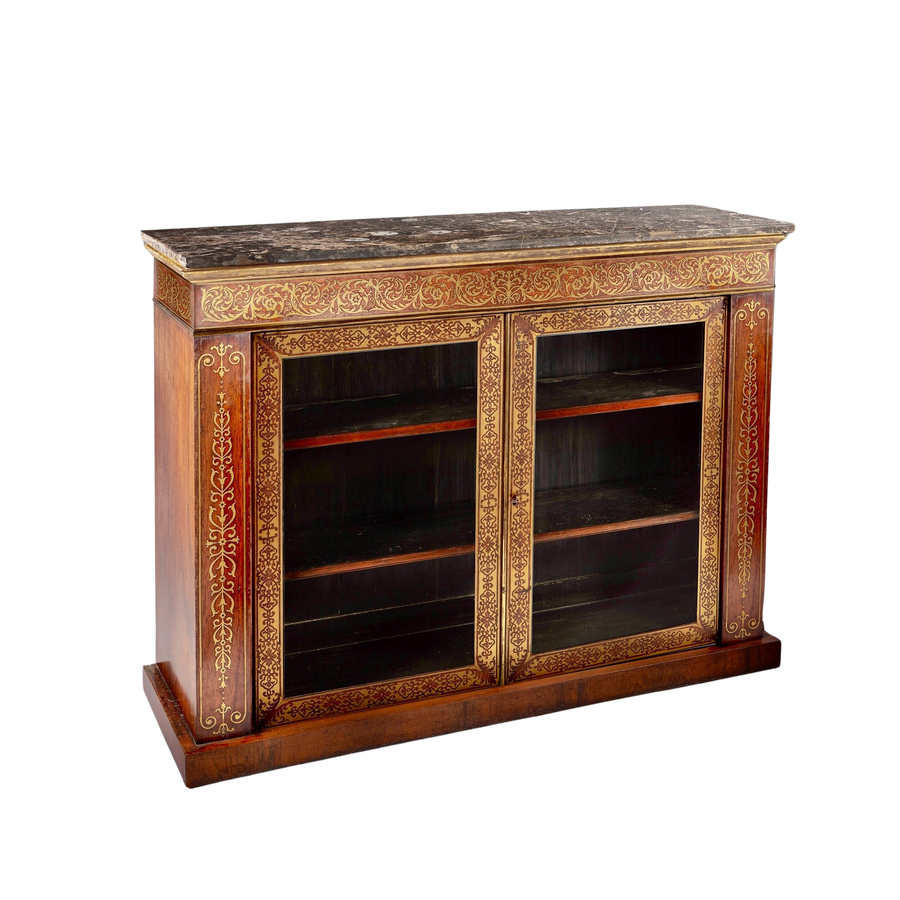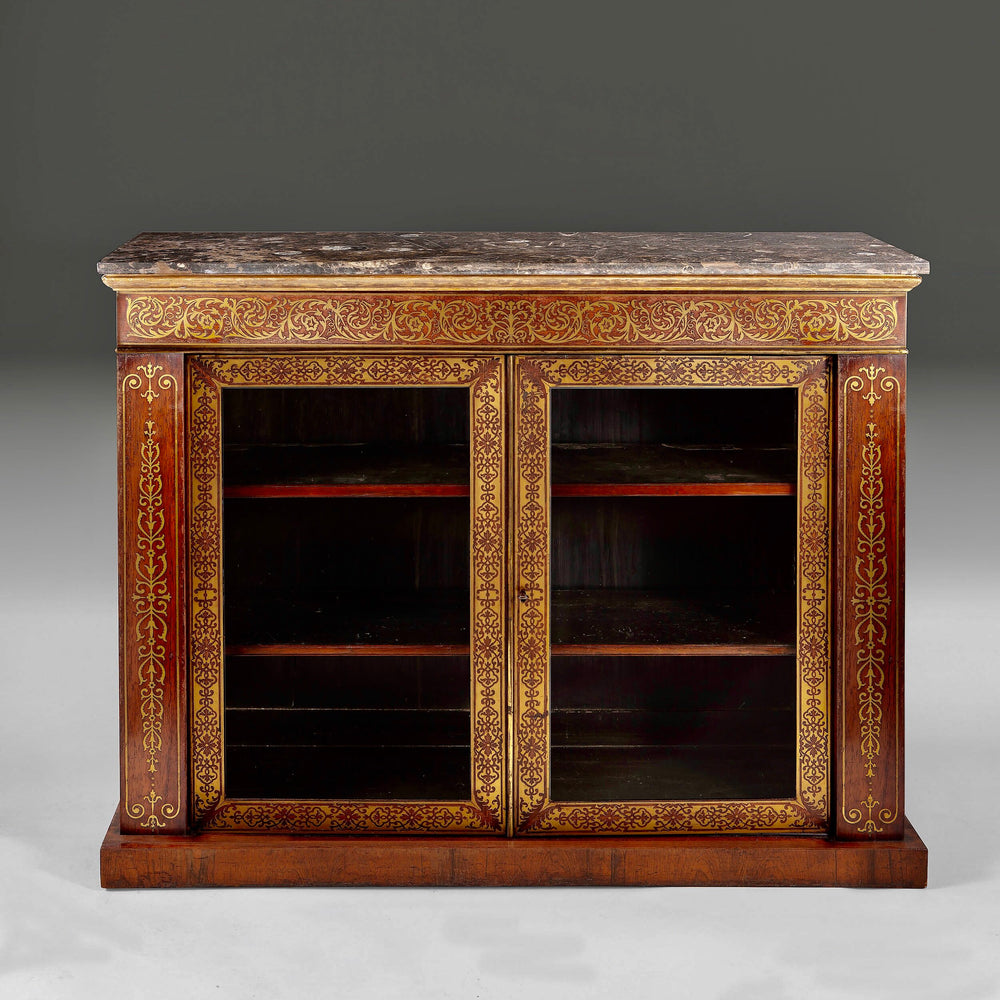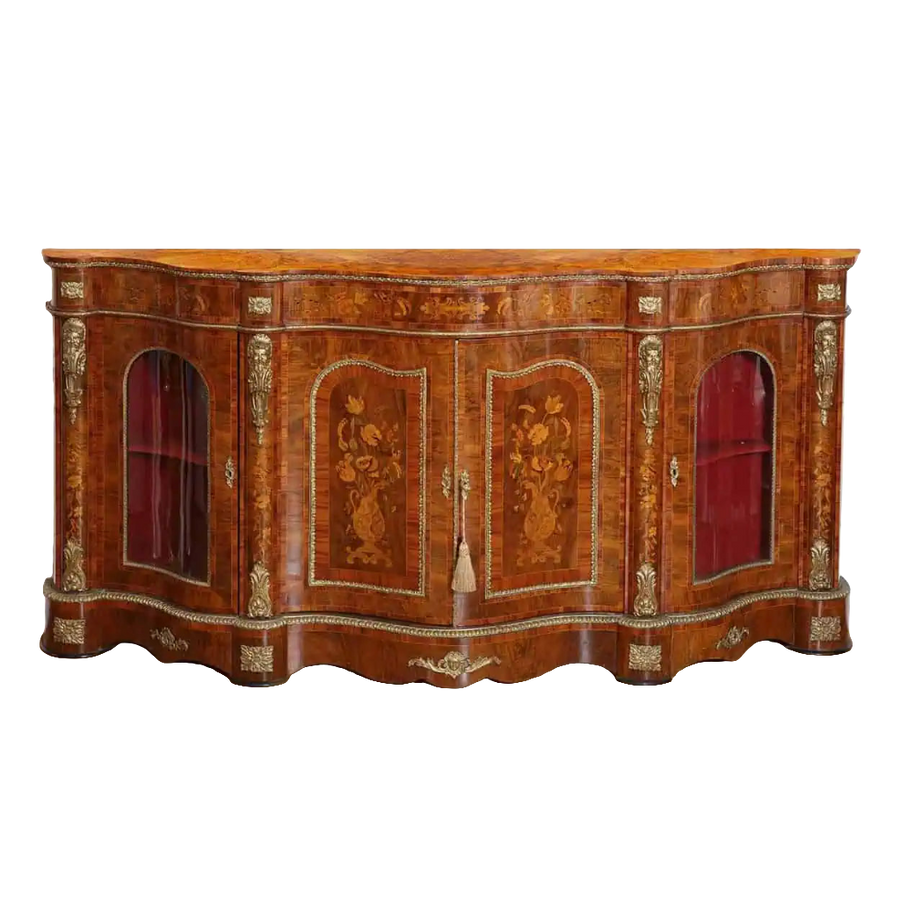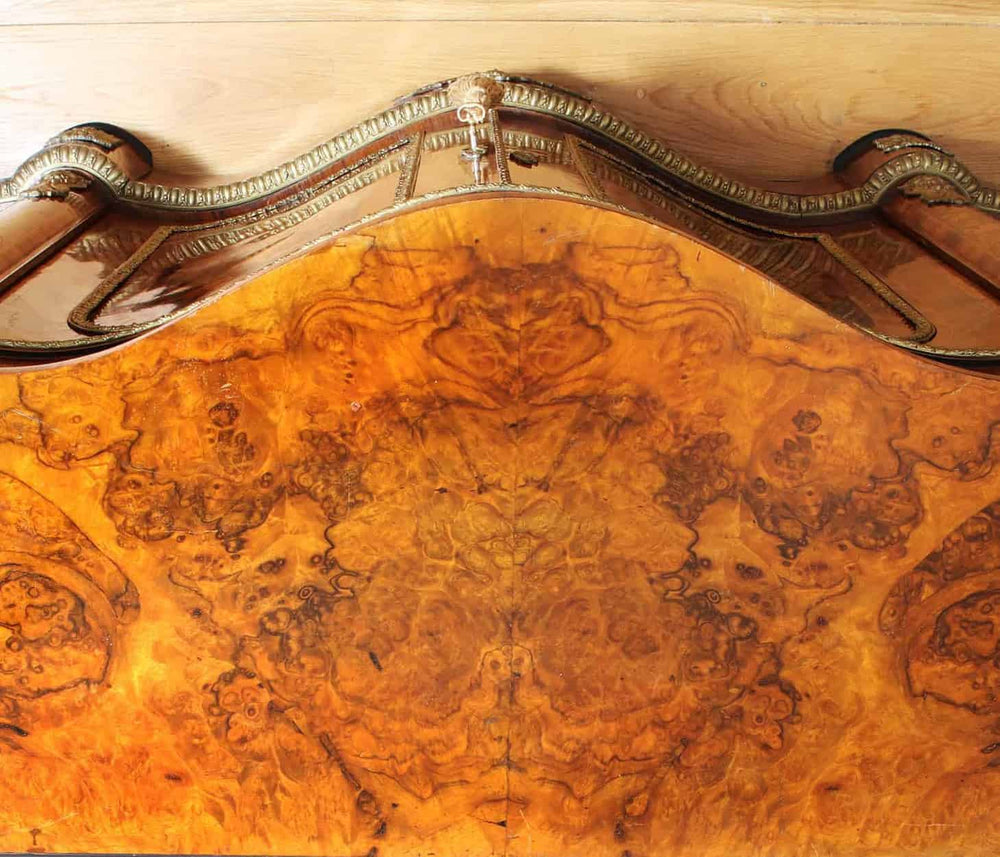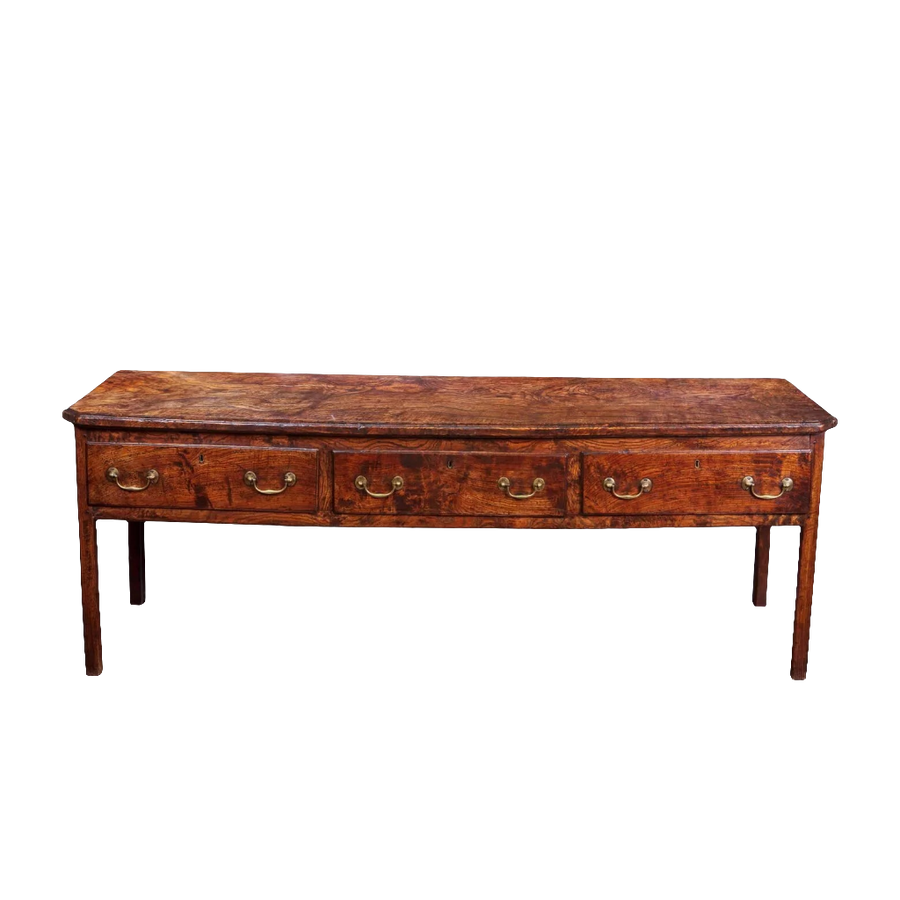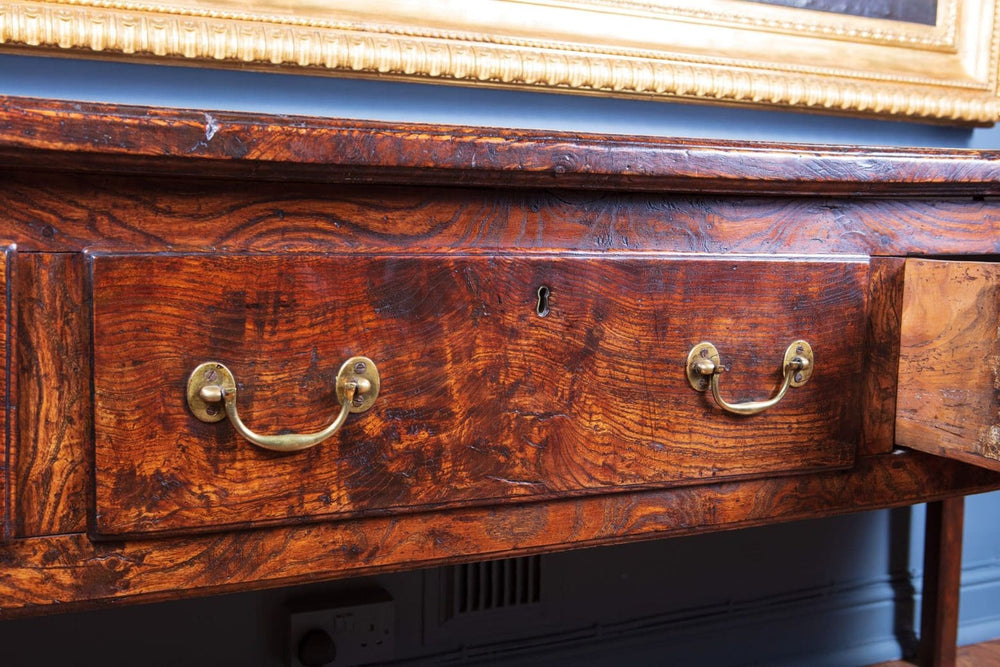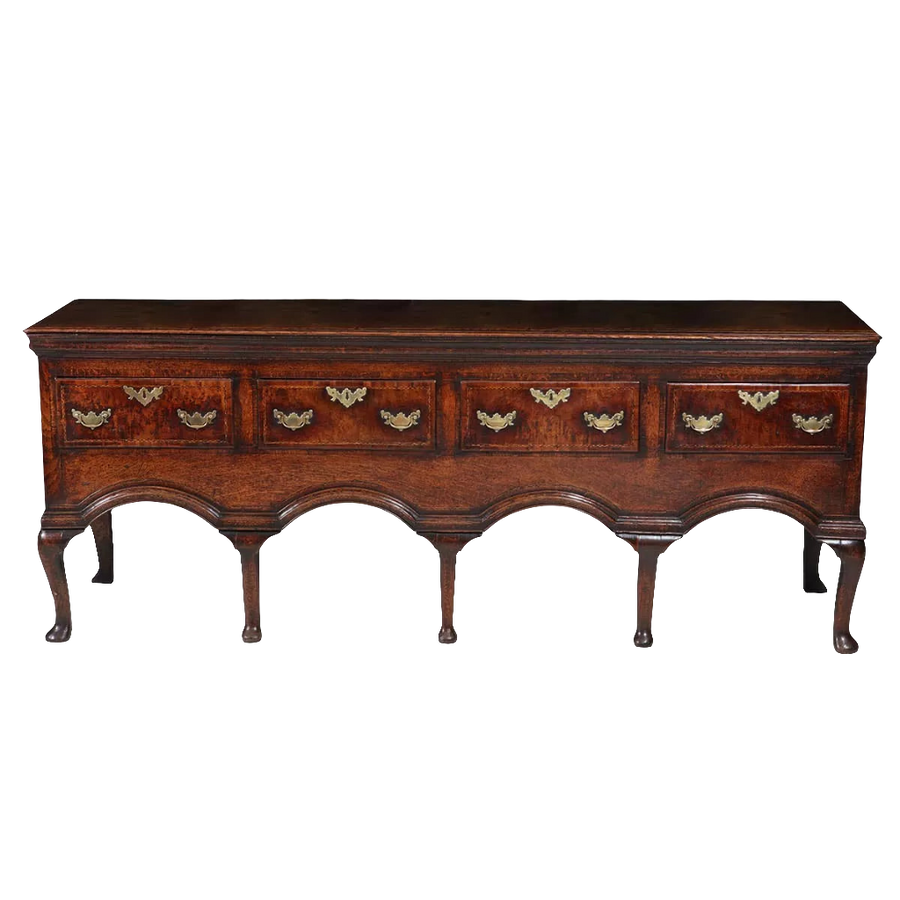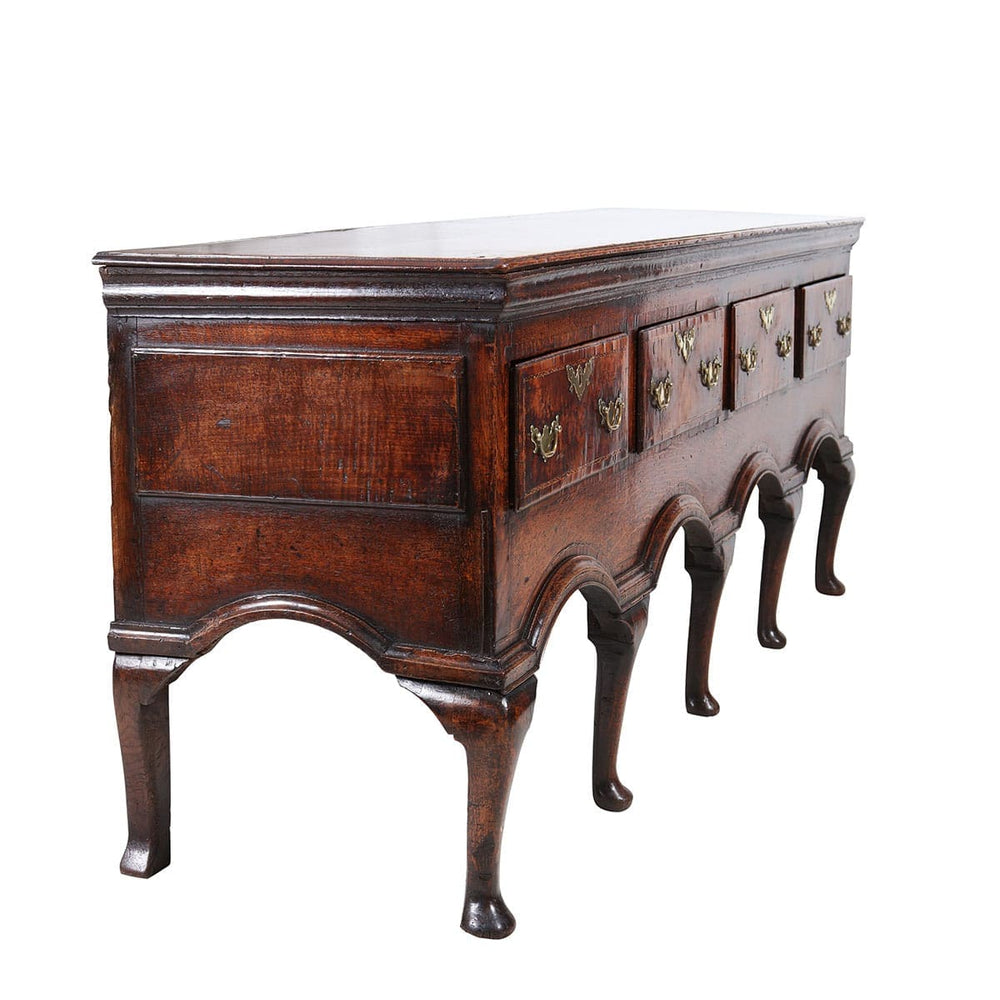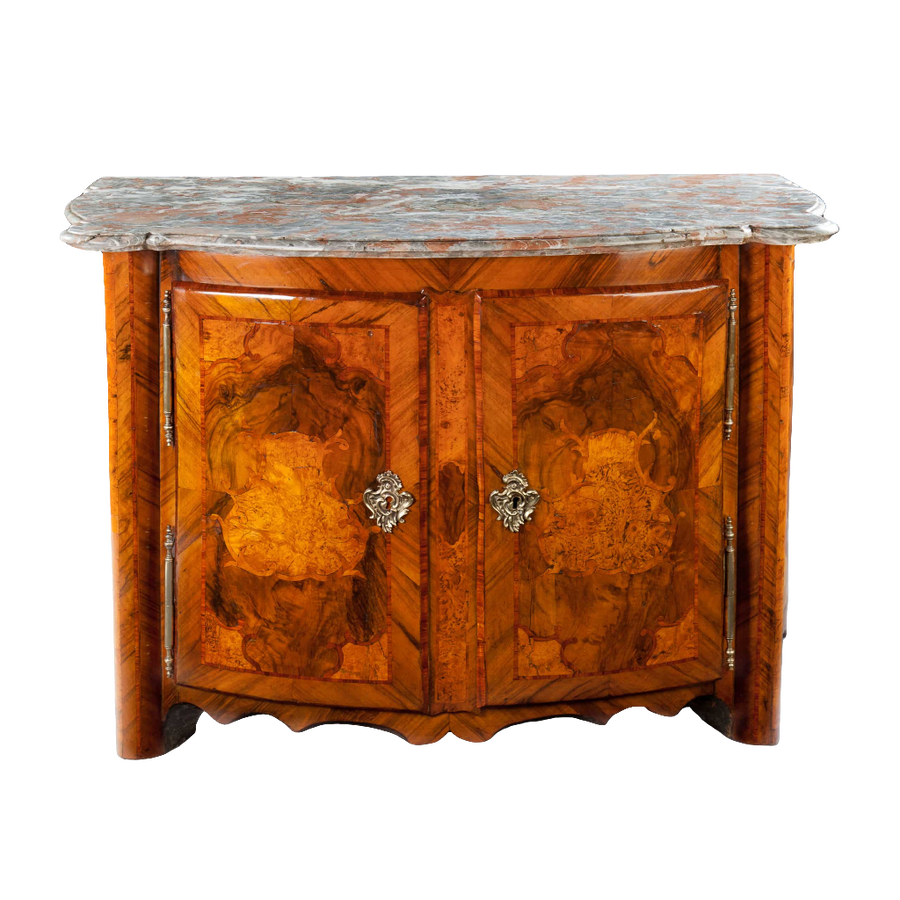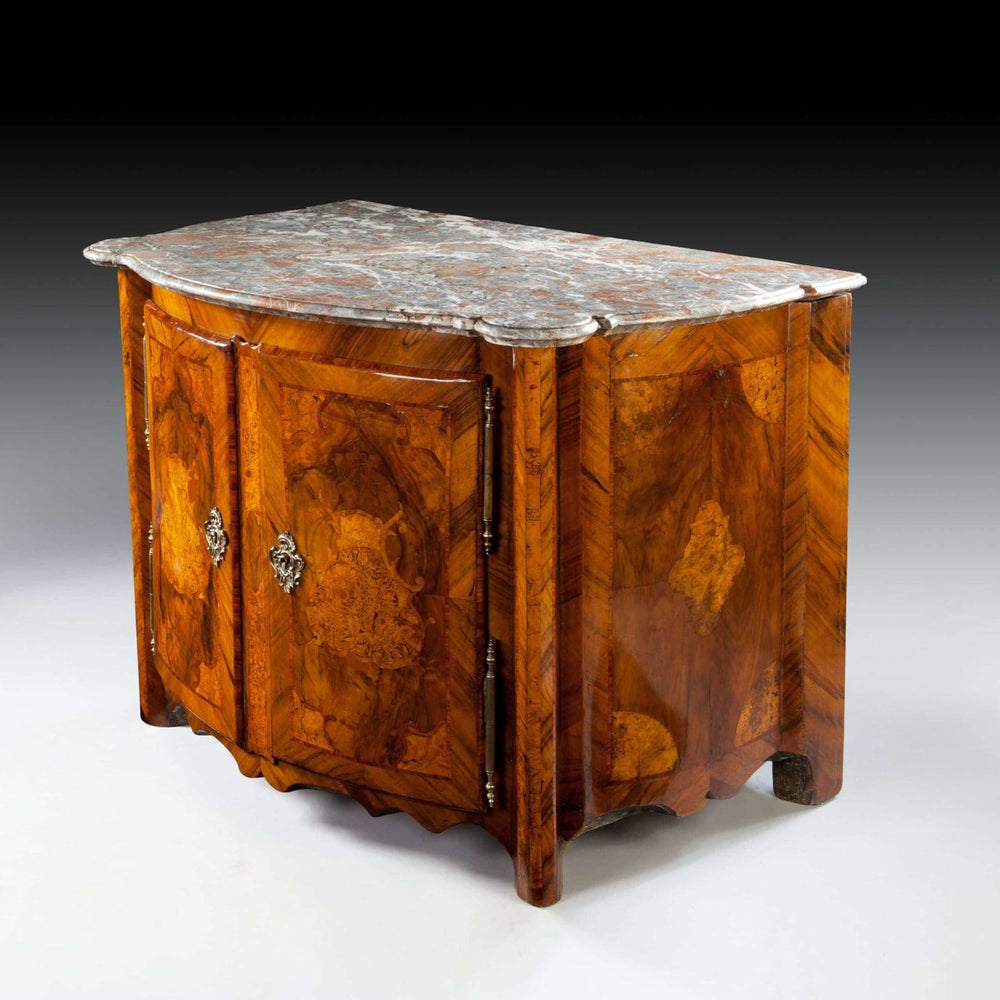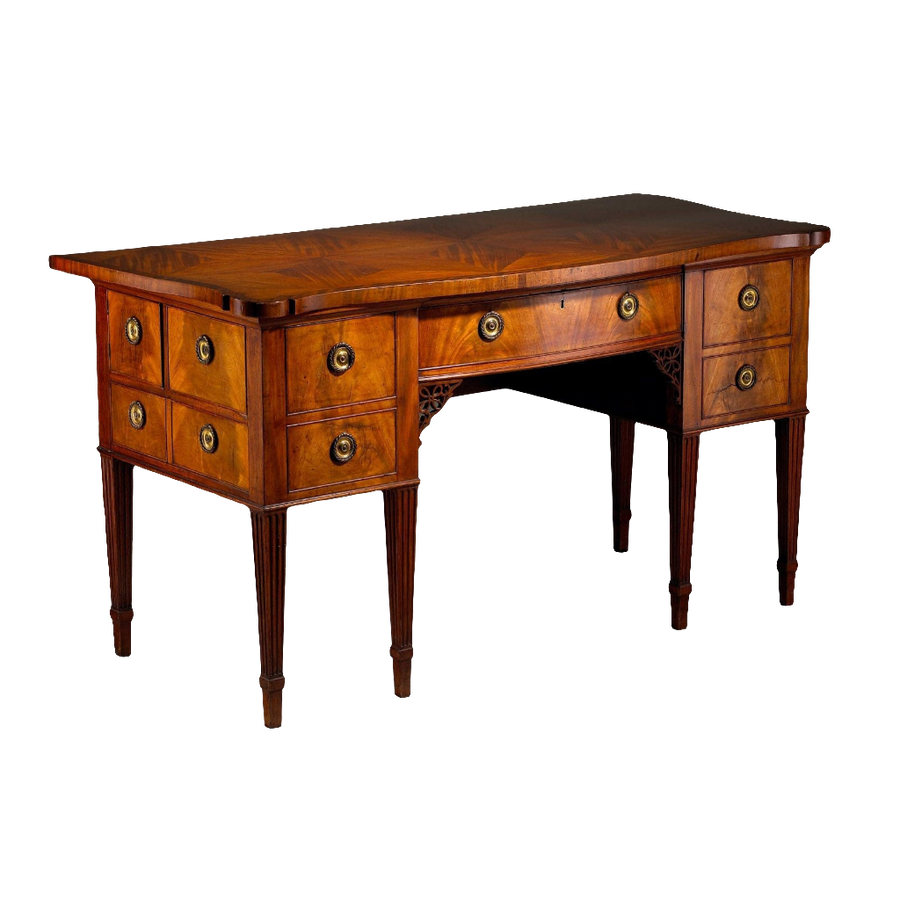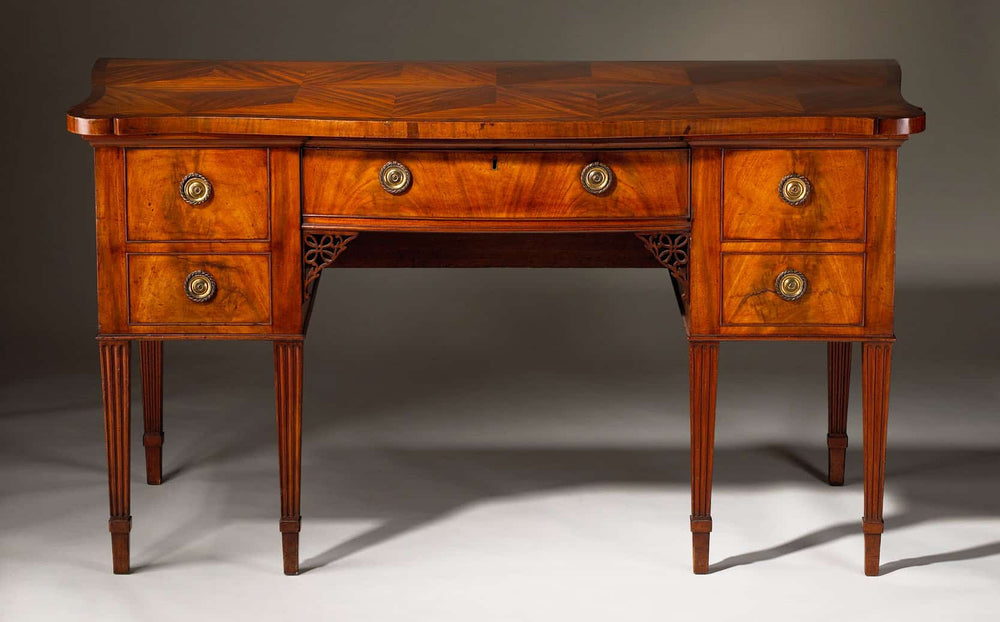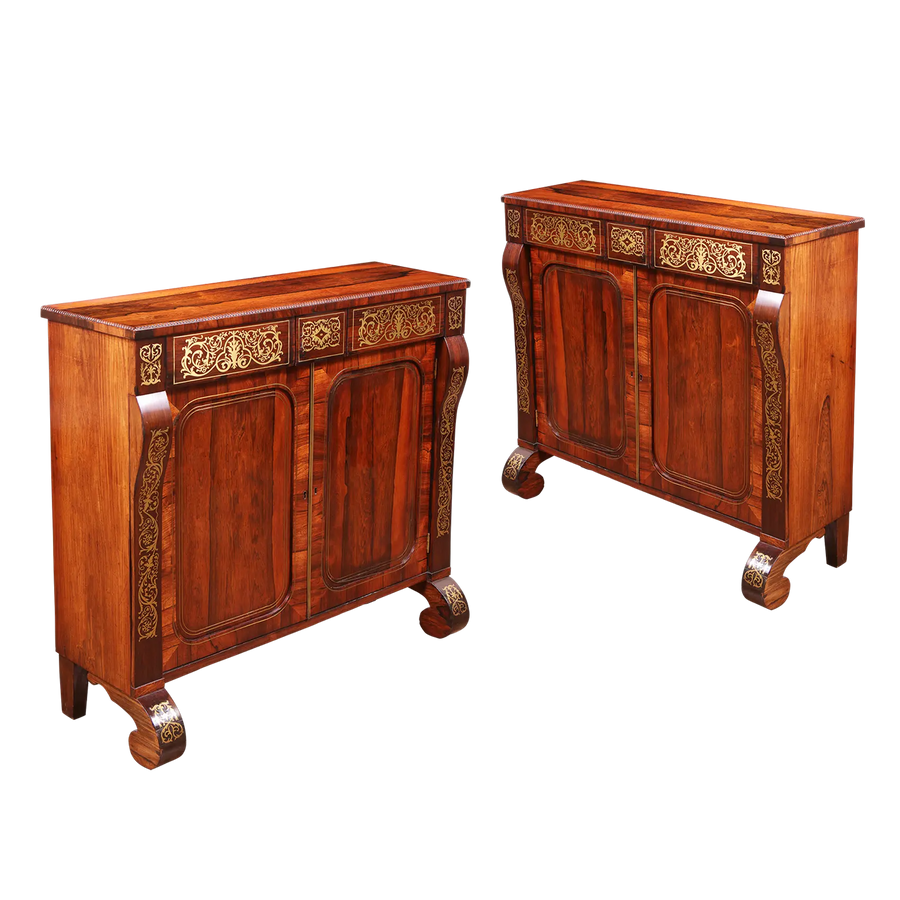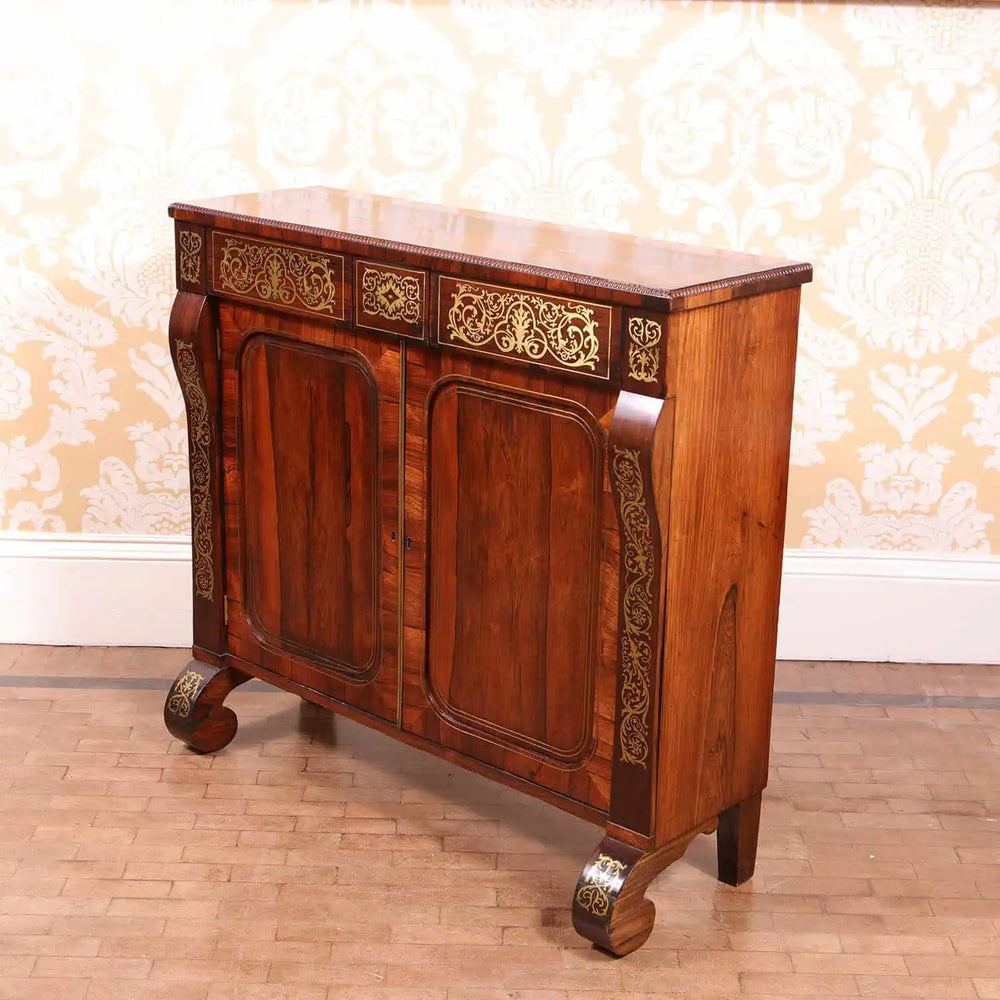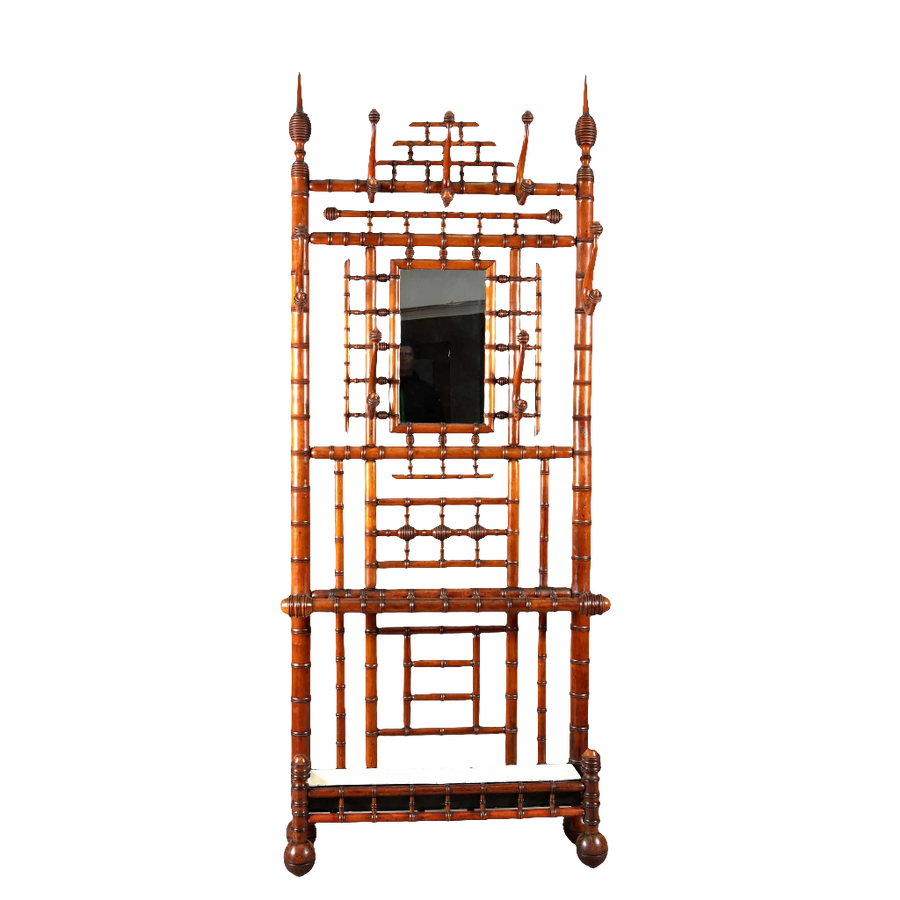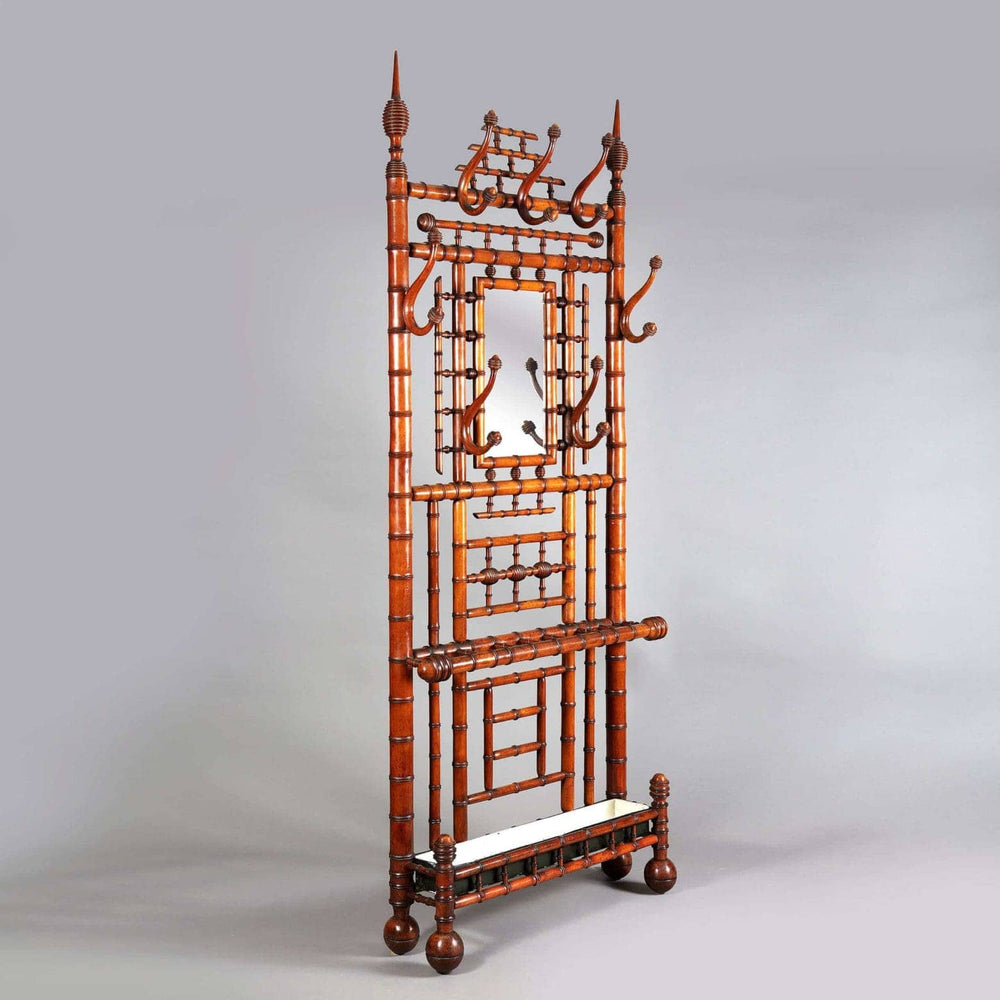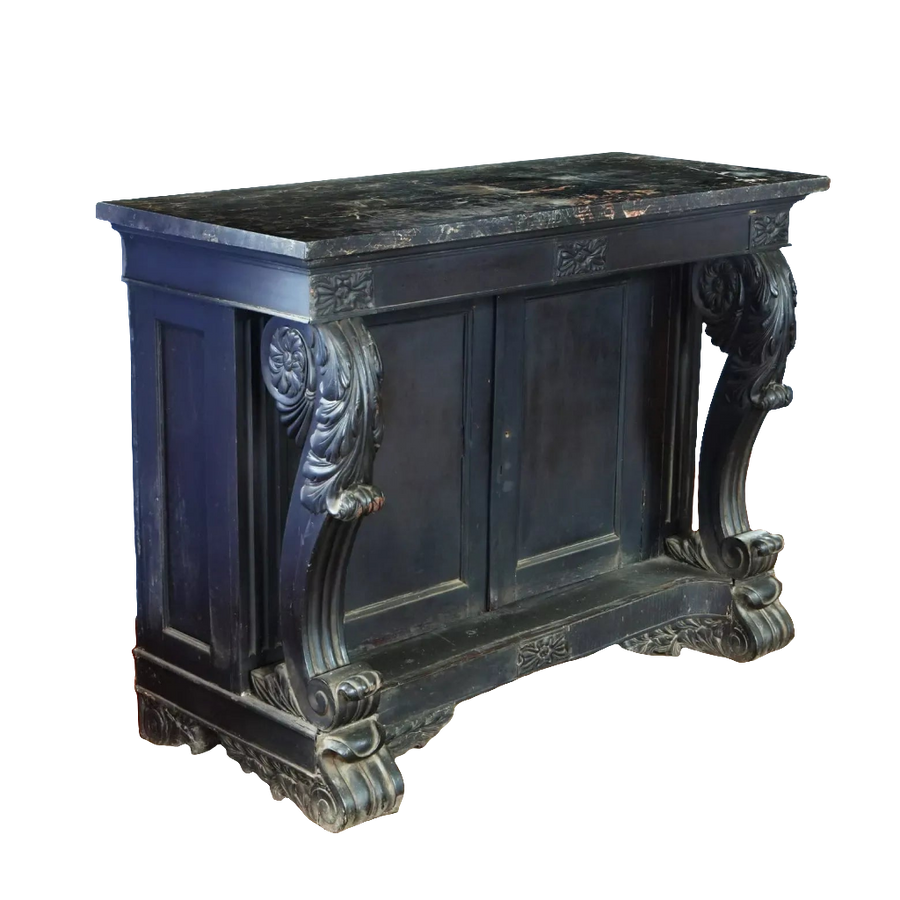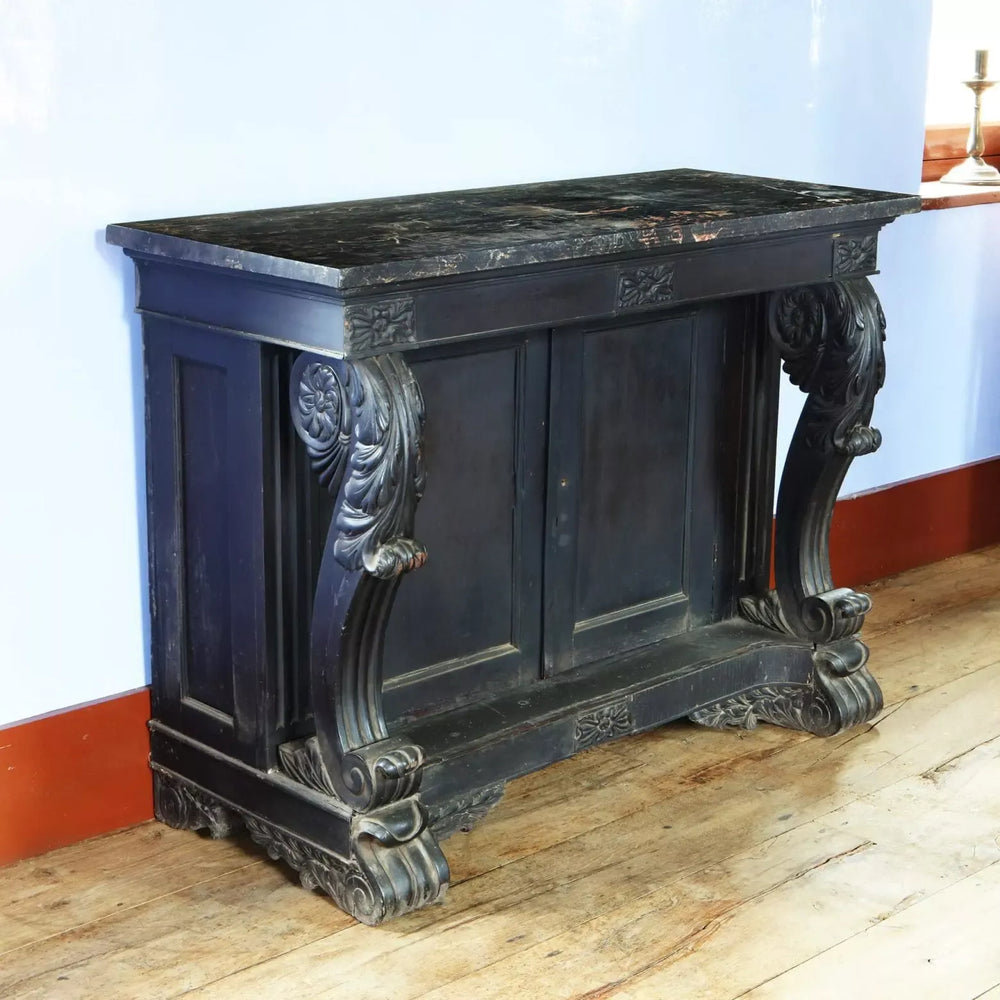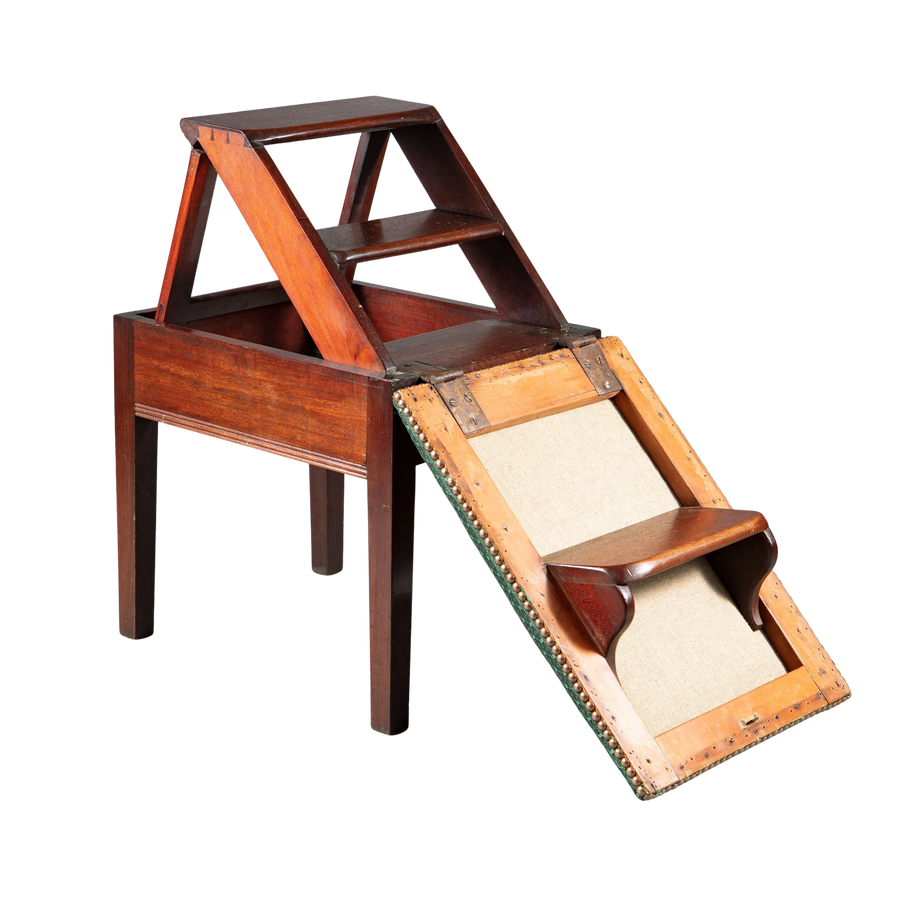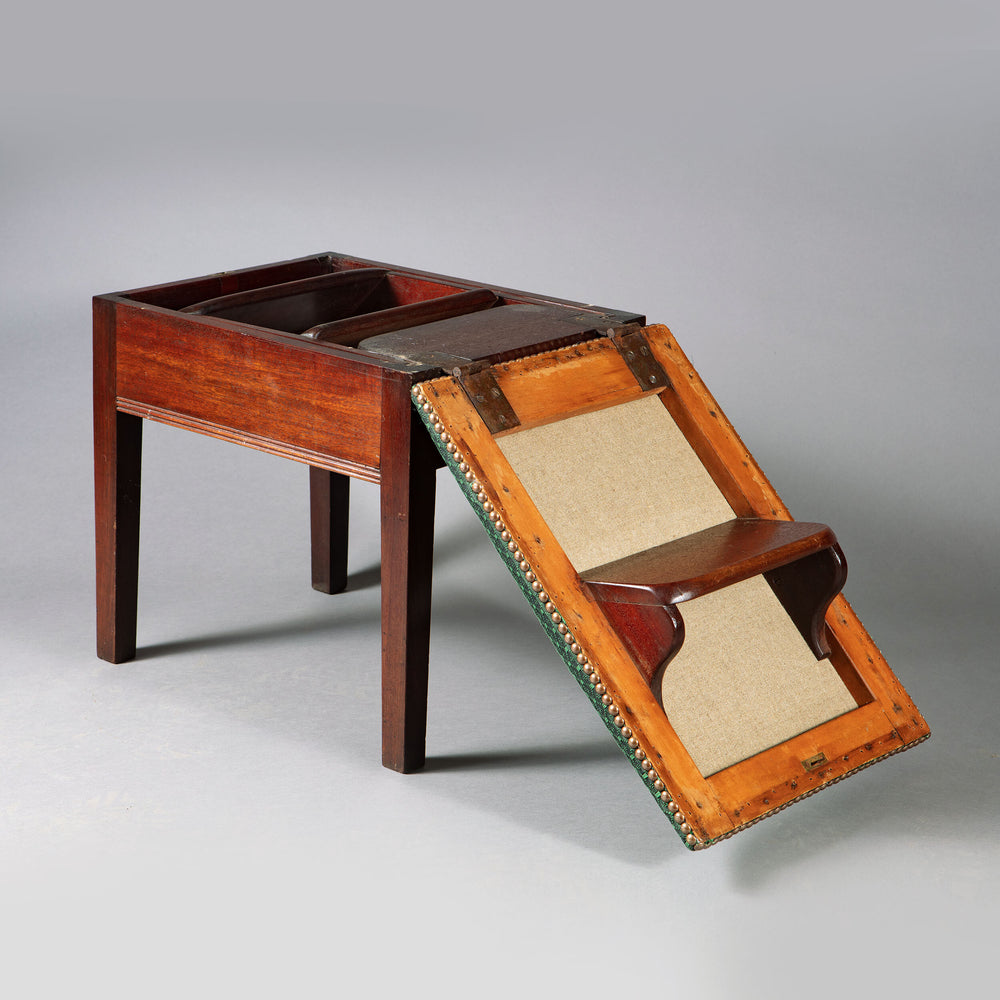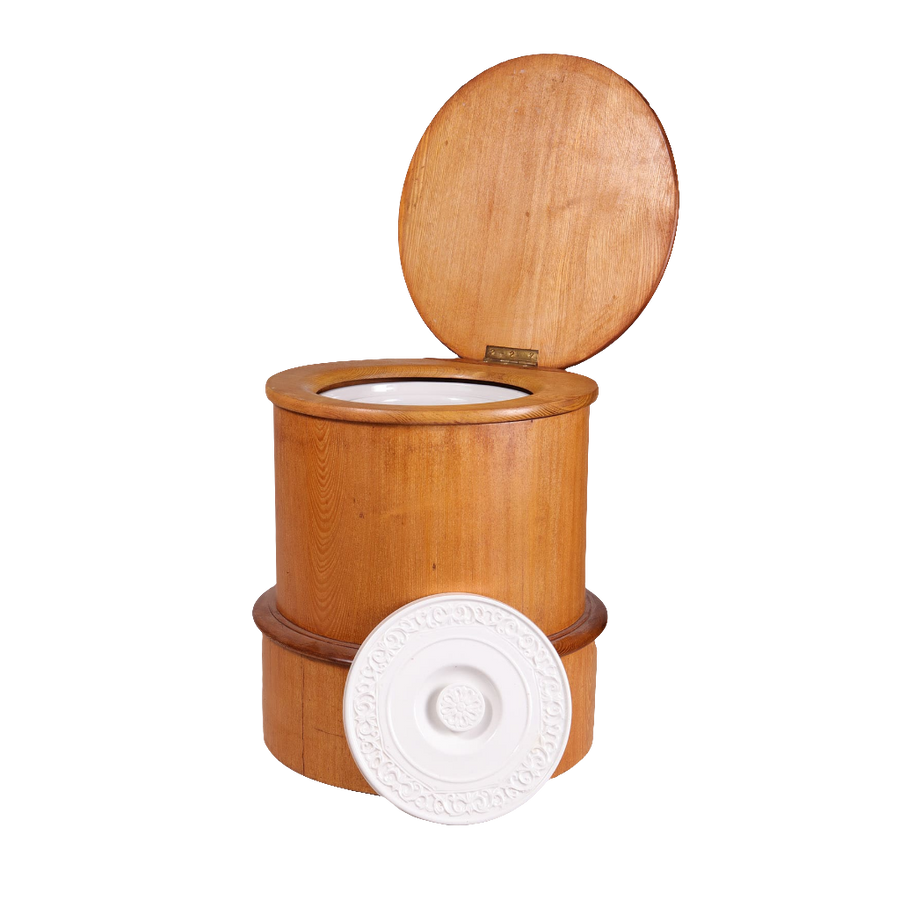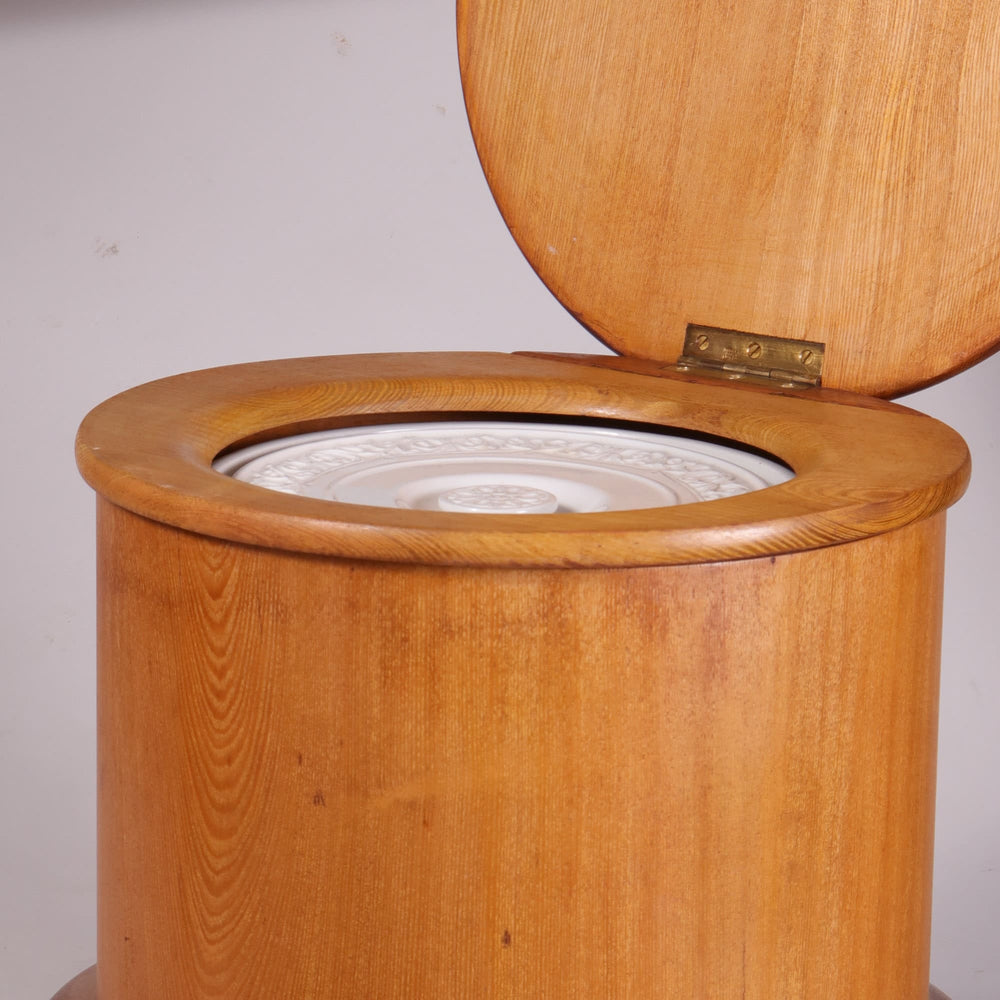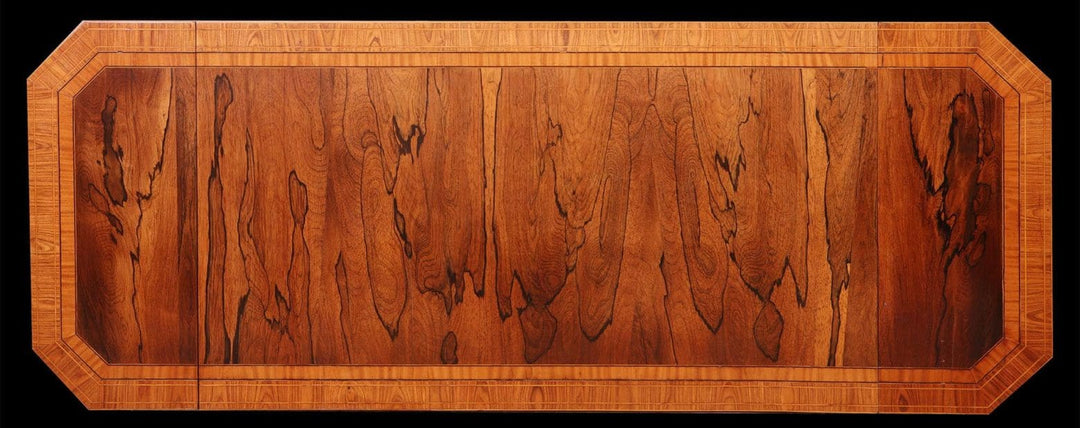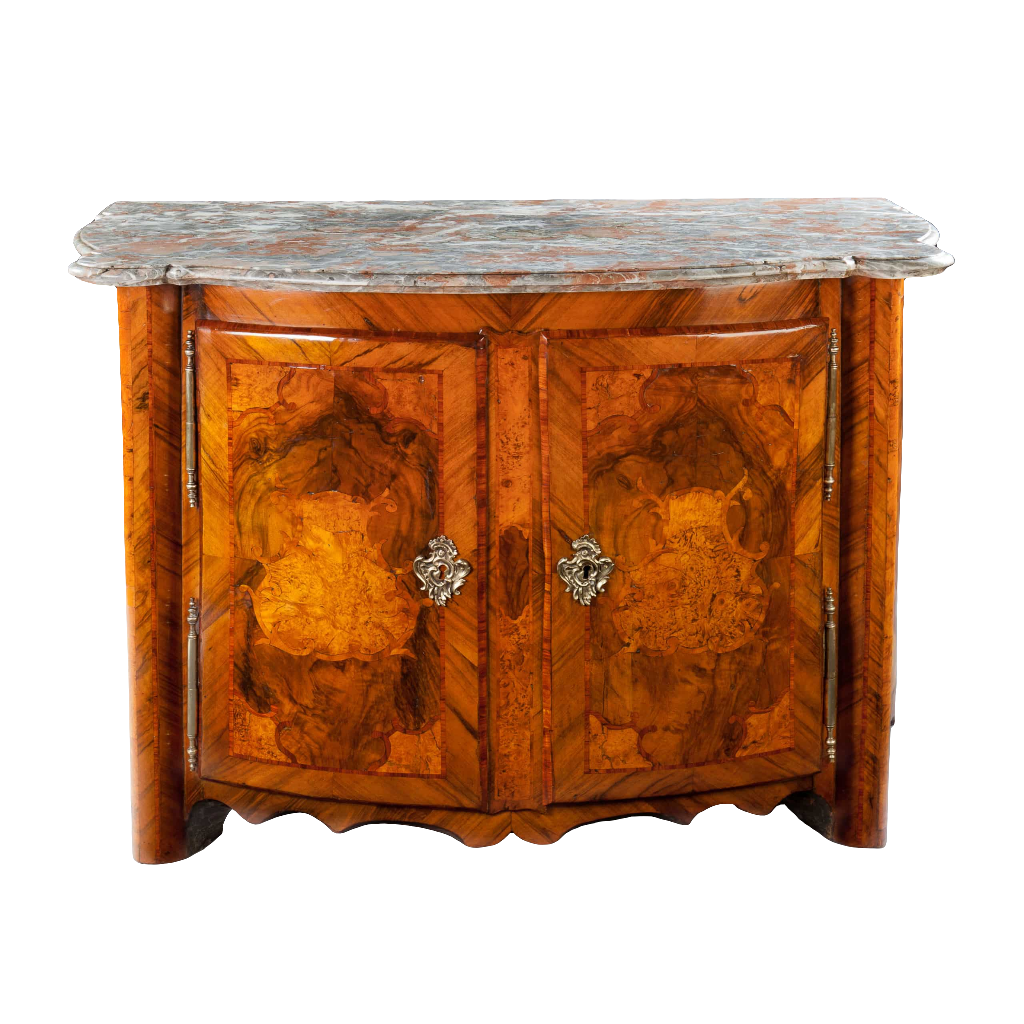
Refined Storage with Decorative Impact
Nicholas Wells Antiques offers an exceptional collection of antique side cabinets and buffets, celebrated for their elegance, craftsmanship, and versatility. From English Georgian and Regency examples to finely decorated French and Continental masterpieces, these pieces were designed to serve both functional and decorative roles in grand interiors.
Our collection includes richly figured mahogany, satinwood, and rosewood cabinets, often enhanced with marquetry, lacquer, or gilt-bronze mounts. Some are fitted with marble tops, providing both practicality and grandeur. Whether used to display treasured objets d’art, to house dining essentials, or to serve as focal points within a room, these cabinets embody timeless sophistication.
Frequently Asked Questions
Q: What is the difference between a side cabinet, a commode, a chest of drawers, and a buffet?
A: While these forms share similarities as functional storage furniture, each has its own distinct history and purpose:
-
Side Cabinet – Typically smaller and often more decorative, designed for both storage and display. Side cabinets were placed in drawing rooms, libraries, or halls, and frequently feature veneers, marquetry, lacquer panels, or gilt-bronze mounts.
-
Commode – A French form, usually bombe or serpentine in shape, richly veneered and often mounted with gilt bronze and topped with marble. Commodes were statement pieces in aristocratic interiors, combining storage with high decorative value.
-
Chest of Drawers – An English development, more rectilinear in form, with stacked drawers for clothing and household storage. Often crafted in mahogany, walnut, or satinwood, they could be simple or finely inlaid, reflecting Georgian restraint and practicality.
-
Buffet – A larger, heavier cabinet traditionally associated with dining rooms, used to store silver, serving ware, and linens. French Louis XV and Louis XVI buffets are especially admired for their proportions, veneers, and decorative mounts.
In essence: commodes and chests of drawers are drawer-based forms (French vs. English traditions), side cabinets are smaller multipurpose storage/display pieces, and buffets are substantial dining-room cabinets designed for service and storage.
Q: From what periods are your side cabinets and buffets?
A: We offer examples from the 18th to the 19th centuries, including English Regency side cabinets, French Louis XVI buffets, and later Victorian designs.
Q: What materials are most common?
A: Rich mahogany, rosewood, walnut, and satinwood are most typical, with many pieces featuring exotic veneers, gilt mounts, lacquer panels, or marble tops.
Q: Can side cabinets and buffets be used in modern interiors?
A: Absolutely. These pieces are versatile and work equally well in dining rooms, hallways, or living spaces as both storage and statement furniture.
Q: Do your cabinets come with provenance?
A: Yes. We provide detailed descriptions including provenance, notable makers, and stylistic analysis for each piece.
Q: How do you ship large buffets internationally?
A: We partner with professional art shippers who ensure secure, insured, and museum-standard delivery worldwide.
Explore our Antique Side Cabinets & Buffets to discover rare examples that combine practical storage with the artistry of European furniture design.




